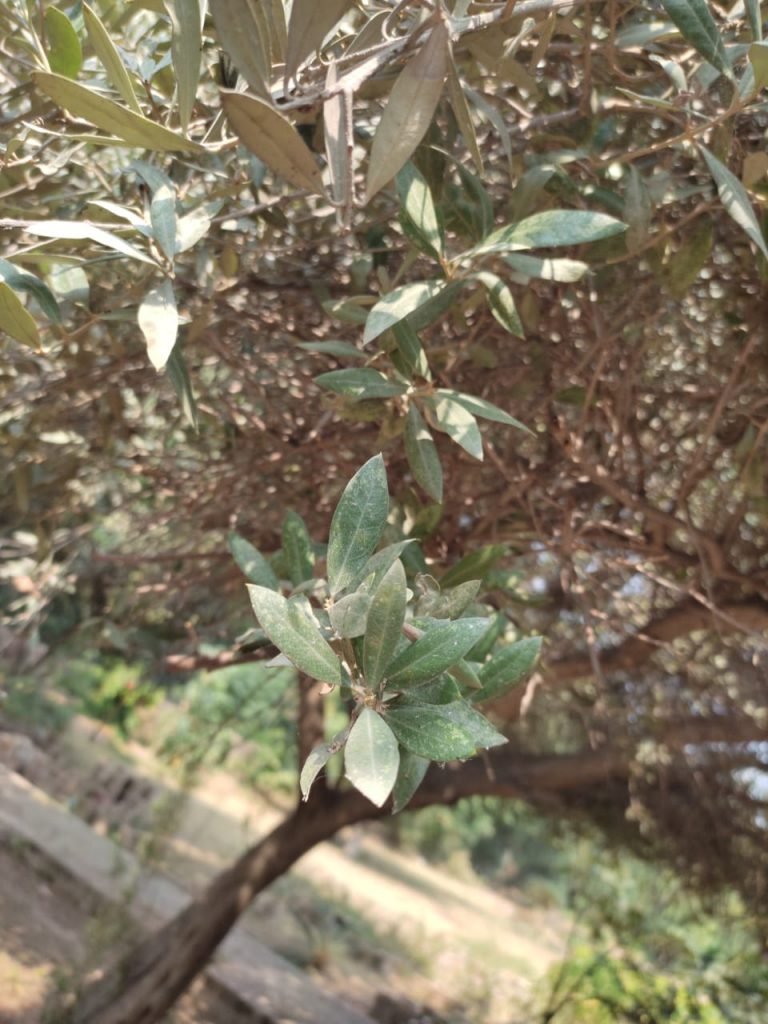Why My Olive Leaves Are Curling?
Olive, one of the most beautiful silvery-green-leaved indoor and outdoor plants, faces several problems during its growth.
One such problem is the curling of its leaves. The leaves may curl upward and wrinkles may also appear. If you are wondering why my olive leaves are curling, read this detailed guide to the end.
This curling of leaves is a sign of an underlying problem. If not taken care of, this can result in serious damage to your plant.

Why My Olive Leaves Are Curling – Reasons
There are a number of reasons for the leaves curling
1. Amount of water
Water is a basic requirement for plant growth. Water presence as well as its quantity is crucial for proper development.
For the first year of growth, the olive plant requires water once a week, and later watering the plant once a month is enough. But when the olive plant receives water less than this quantity causes its leaves to curl.
The plant leaves curl to avoid photosynthesis as the roots are dry. In the same way, when there is more water than required the leaves also curl and ultimately fall off.
2. Proper sunlight
Just like water sunlight is also important for the plant. The olive plant requires full and 5 to 8 hours of sunlight daily.
But when the plant is planted or the plant pot is placed at such a place where it receives less sunlight than it also results in its leaves curling.
Do not plant this plant under a large tree as it will block sunlight for the plant.

3. Change in temperature
The olive plant leaves may also show curling because of extreme changes in day and night temperature in the surrounding of the plant.
Too cold during the night or too hot during the day cause the leaf to curl in such conditions the plant should be placed inside the house to prevent it from curling.
4. Insect infestation
Many insects or pests such as black scale, garden weevil, and olive lace bug attack plants and feed on plant leaves as a synthesized sugar source.
These pests not only intake prepare food from plants but also interfere in photosynthesis which ultimately results in leaf curling.
5. Overuse of insecticides and pesticides
Many times when our plant is attacked by insects we use a number of synthetic insecticides without knowing their side effects.
These insecticides and chemicals kill insects but they also accumulate inside plant leaves and cause curling of leaves. For insects or pests, we should use natural fertilizers that kill these harmful creatures without having any significant side effects.
6. Recent repotting
Many times after repotting the olive plant its leaf curl. This occurs due to damage to the most sensitive part of the plant which is the roots.
This curling also occurs because of some other factors related to transplantation such as a large number of pests in a new environment, insufficient nutrients or sunlight so this plant must be repotted carefully and after gathering enough information about the new environment to which the plant is transferred.
7. Overuse of fertilizers
Many people overuse fertilizer for fast growth when they brought new plants so these chemical fertilizer cause damage to plants such as leaf curling in the case of an olive plant.
So, do not add a large number of fertilizers to the olive plant at once. These fertilizers have a high content of nitrogen that causes reverse osmosis in the root region thus the plant loses water.
8. Unwanted plant around the olive(weeds)
When the olive plant is grown in an area having greater moisture content and nutrients some unwanted plants also grow along with it.
These plants compete with the olive for nutrients and water. Such competition results in a change in the olive plant body and one such change is the curling of leaves. Try to get rid of these unwanted plants at an early stage of their sprouting.
Olive leaves curling – conclusion
Water your plant once a week if it is in the first year of growth but later watering once a month is enough. Place your plant in a place having 5-8 hours of full sunshine.
Take special care during scorching and very cold temperatures. Use insecticide to prevent an attack of insects on the leaves. Before repotting, take care of important things about the new environment as discussed above.
Do not overuse fertilizers and synthetic herbicides in large quantities and remove any unwanted plants from the olive plant surrounding.
So, by taking care of the above-mentioned measures, you can prevent and cure the curling of olive plant leaves.





![how much sunlight does a pineapple plant need? [EXPLAINED]](https://ispru.com/wp-content/uploads/2023/05/new-768x376.png)

What is the difference between shrub and herbs.
The plant leaves curl to avoid (photosynthesis)as the roots are dry?is leaf curl because of transpiration or photosynthesis?i think little bit water is sufficient enough to do photosynthesis so that water comes from the root xylem to the green plant leaves’ mesophyll and veins even when the plant is ready to shed it’s leaf the water in the leaf is plenty enough to do photosynthesis but we know plant don’t do photosynthesis at the time of leaf shedding, autmn(here i’m just giving example) so i think it curls to avoid excessive transpiration not photosynthesis.
Bottom line.very informative article objection only on reason 1st(photosynthesis)